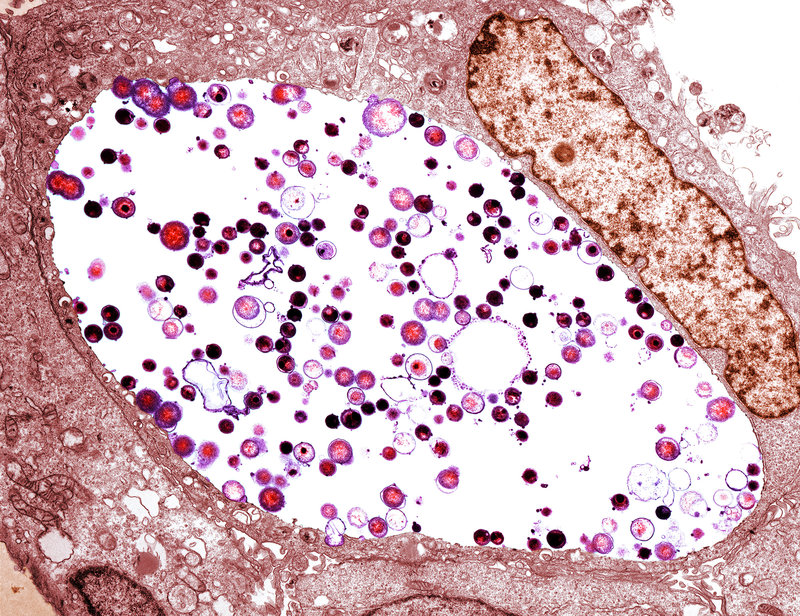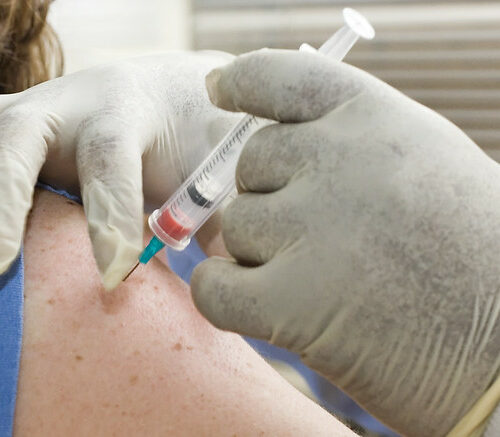
Record High Number Of STD Infections In U.S., As Prevention Funding Declines

BY RICHARD HARRIS, NPR
For the fourth year in a row, federal health officials report that there has been a sharp increase in sexually transmitted diseases in the U.S. The Centers for Disease Control and Prevention tallied nearly 2.3 million cases of chlamydia, gonorrhea and syphilis in 2017 — an increase of 200,000 cases over the previous year, and a record high.
Chlamydia, a bacterial infection, remained the most common sexually transmitted disease, with more than 1.7 million reported cases. But health officials are concerned that gonorrhea cases increased a startling 67 percent between 2013 and 2017, and syphilis climbed even faster — 76 percent over those four years.
After many years of success in controlling sexually transmitted diseases, “We’ve been sliding backwards,” says Dr. Gail Bolan, director of the CDC’s Division of STD Prevention. She spoke at a news conference in Washington Tuesday.
“The U.S. continues to have the highest STD rates in the industrialized world,” says David Harvey, executive director of the National Coalition of STD Directors, “and it preys on the most vulnerable among us.”
“Here’s a quote for members of the media,” Harvey said at the press conference. “Ready? It is time that President Trump and Secretary [of Health and Human Services Alex] Azar declare STDs in America a public health crisis.”
Harvey argues the root of the problem is that federal funding to prevent and control sexually transmitted diseases has dropped by roughly 40 percent in the past 15 years, which has choked off state and local programs. He called on Congress to appropriate $70 million immediately to address the crisis.
“We all understand that you’ve got to maintain your bridges and your roads — and you see them on TV when they crumble,” says Michael Fraser, executive director of the Association of State and Territorial Health Officers. “You don’t always see a crumbling public health infrastructure.”
One big challenge with these diseases is most people who carry them don’t have any symptoms, so they aren’t aware when they’re passing them along to sexual partners. Current recommendations call for sexually active women under the age of 25 to get tested annually for chlamydia and gonorrhea. Men who have sex with men should also get tested at least annually, she says.
California STDs Raging At All Time Highs For Third Year In A Row
But harried (or embarrassed) doctors often don’t offer those tests. “Everyone needs to ask their doctor, ‘should I be tested for STDs? I hear they’re going up,’ ” Bolan says.
Chlamydia and gonorrhea, if untreated, can leave a woman infertile. Syphilis can spread from mother to fetus, and cause the baby to have birth defects or to be stillborn.
Harvey noted that a thousand babies a year are diagnosed with congenital syphilis, despite mandatory syphilis testing when a woman is first found to be pregnant (the disease can spread to women during pregnancy). Harvey says this statistic is “shocking,” considering that the nation has managed to all but eradicate mother-to-child transmission of HIV.
“We are failing these mothers and their newborns,” he says, “and something needs to be done about it.”
Bolan also worries that Neisseria gonorrhoeae, the bacterium that causes gonorrhea is becoming resistant to the antibiotic azithromycin, which is part of the recommended treatment regimen. Lab tests have found that 4 percent of gonorrhea samples are now resistant, up from 1 percent in 2013.She is concerned that could ultimately lead to infections that are resistant to the last line of defense against gonorrhea — ceftriaxone. “Our nation urgently needs additional treatment options for gonorrhea,” she says.
The press conference was part of a CDC meeting on STD prevention in Washington this week. The agency plans to publish its annual report about sexually transmitted diseases in late September.
Copyright 2018 NPR. To see more, visit npr.org
Related Stories:

How does climate affect your life? Tri-Cities survey open now
Cities, towns and counties are starting to plan for a future with climate change. Now, the Tri-Cities area is asking people about regional hazards and historical trends. (Credit: Simon Foot

Whitman County reports first flu-related death of the season
Hospitalman Yenifer Gutierrez, left, and Hospitalman Brashea Ojeda treat COVID patients in the ICU Aboard USNS Comfort in April of 2020. Influenza deaths surpassed COVID-19 deaths for this first time

Washington state reports 7-year peak in influenza-related deaths
The Washington state Department of Health reported on March 20th that influenza activity reached its highest levels in seven years, with the most flu-related deaths since the 2017-2018 flu season.















